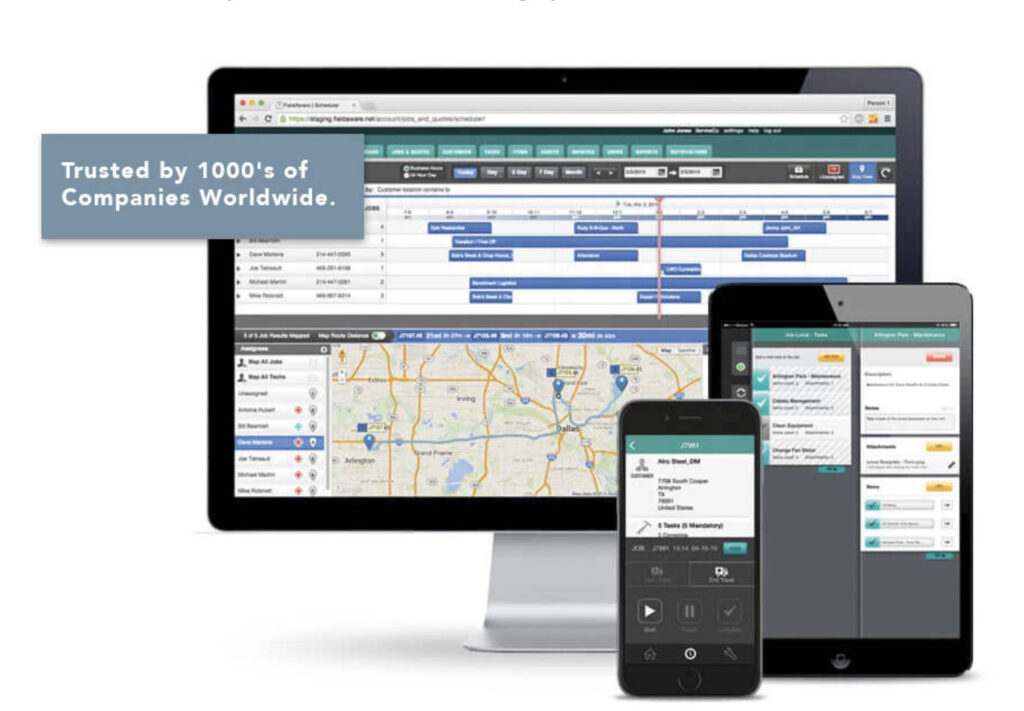What Field Service Organizations Should Expect In The Post-Pandemic World
In this new article for Field Service News, Marc Tatarsky, SVP of Marketing at FieldAware, discusses what organizations in the field service sector should expect as the world gradually reopens for business.
As we enter just past the halfway point of 2021, it feels as though the trials and tribulations of the last 24 months are finally working their way into the rearview mirror. While the COVID-19 pandemic isn’t entirely behind us, much of the world is indeed getting back to a new normal of operating, and the global economy is kicking back in. With the global vaccination rate reaching over a majority of the population in many countries (well over 50% and rising), summer vacations are starting to kick in. Airlines are adding flights, global business events are beginning to go back on the calendar, and many businesses are re-evaluating their office policies.
There is no doubt that the ramifications of COVID-19 are still being felt. Some of the effects of a paused global supply chain are still creeping up in many unanticipated areas – chip manufacturing shortages, surging lumber prices, and even a national chicken wing shortage in the US. But as the dust begins to settle and we analyze some of the lasting repercussions from our survival responses to COVID-19, several unique business model implications have risen to the top. For example, within the service management sector, one lasting transformation has been the consumerization of the end-to-end service experience.
THE RAMIFICATIONS OF THE PANDEMIC WILL STILL AFFECT THE FIELD SERVICE SECTOR AS COMPANIES QUICKLY TRY TO ADAPT TO THE “NEW NORMAL”
Something interesting happened when the service industry was forced to deal with the global pandemic. A blurring of B2B and B2C customer experience (CX) expectations occurred. New biosecurity requirements forced many field service organizations to adopt new processes and technology quickly. They needed to fulfill requirements to be accountable for the timing and biosecurity of their dispatched resources. In addition, businesses and employees of all levels were exposed to the art of the possible in their personal customer experiences regarding home deliveries, food services, and other remotely delivered services. The patience for working with an organization that doesn’t take a 360-degree view of customer experience is waning.
Businesses expect the same level of service and data continuity for their business interactions as they do with their consumer interactions. Consumer industry giants like Amazon, Uber, and Netflix are leading the way. Raising the bar of expectations for what customer satisfaction and customer experience can be for all businesses resulting in elevated expectations for understanding past and future service history à la Netflix and point-to-point transparency and status monitoring à la Uber as well as a true 360-degree buyer experience à la Amazon. Businesses expect their B2B interactions to incorporate many of these consumer experiences and have increasing demands for a truly transparent customer experience.
Field service organizations raced to adopt new processes and technologies to accommodate expanded service delivery requirements as part of their required response to COVID protocols. However, many of these efforts were rushed into production, leaving the overall customer experience somewhat flat. Now that the new normal operations are stabilizing, advanced service organizations are taking a closer look at their execution models and identifying necessary enhancements and optimizations to deliver the customer experience anticipated. They know the patience for adapting to and getting the workflows right has shortened, and B2B expectations have risen.
One of the most critical elements of any modern field service management system is interconnectivity and data transparency across various systems of record. With the rising consumerism of the service experience, customer data, history, and the workflows associated with field activities must be thoroughly interconnected and transparent. It is not sufficient to have a closed-loop field service workflow. The workflows must interact and leverage data and insights across the organization to enable a seamless 360-degree customer experience.
While this sounds intuitive, many single-vendor solutions lack the functionality or easy connectivity to accomplish this task without significant customization and professional services investment. A best-of-breed approach can often offer better ROI and additional functional advantages by providing unconflicted integration, improved specialized usability, and scale. This flexibility and robust field service-specific capabilities help meet the changing needs and requirements of the service organization – now and in the future.
Many field service segments are bracing for a surge in demand and must be agile to respond. For example, infrastructure service organizations such as renewable energy must not only contend with macro demand pressures created by a global sustainability push but, in the US, a looming federal infrastructure mandate. As both sides of the aisle start to come together to work through the pressing infrastructure challenges in the US, it appears a significant, albeit slimmed down, infrastructure bill is gaining support. This new federal legislation, combined with the global focus on sustainability and reduced carbon emissions, has set the stage for the next wave of demand in a segment that had raised customer experience expectations accelerated by COVID-19 activities.
This surge in demand and hyper-focus may create a new mini “crisis” in the supporting field service management activities. Leading vendors in the segments impacted by this surge (and similar surges) will need to closely evaluate their service delivery model to ensure they can deliver on the rising expectations and capitalize on the boom in demand.
Further Reading:

See FieldAware in action by requesting your demo now.
FieldAware is a top-rated mobile field service management software that lets you easily schedule and dispatch field workers, assign jobs, invoice customers and more.


